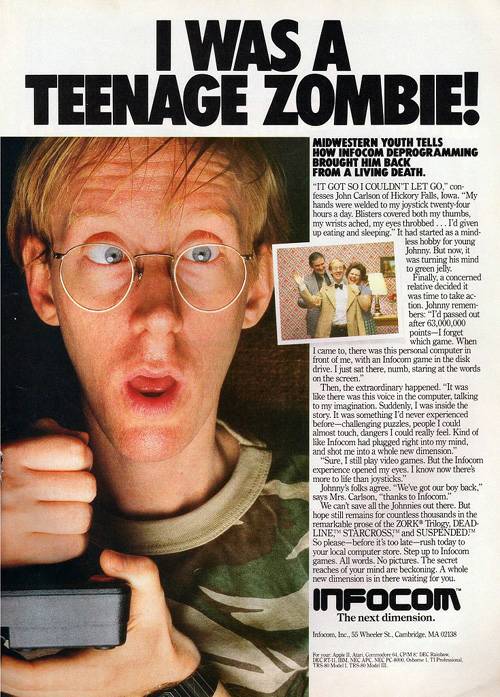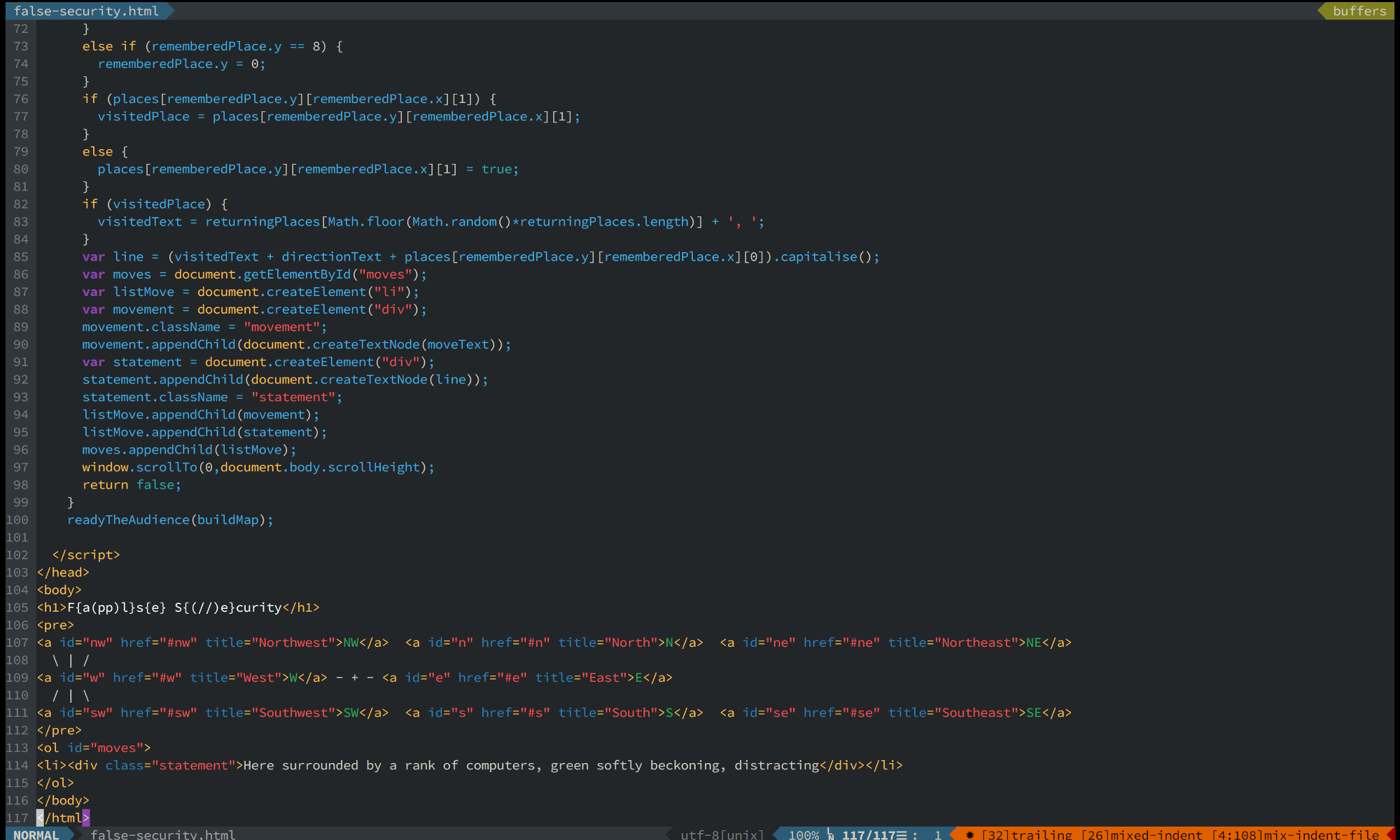 As a child of the ’80s my interests coincided with the high points of the decade’s nerdiness: Dungeons & Dragons, Choose Your Own Adventures and text adventure games. In text adventure games, most famously Zork, the player would interact with the game by typing out commands like ‘north’ (or just ‘n’) to go north, ‘examine’ objects, ‘look’ to view their environment, ‘give’ and sometimes ‘kill’. Sometimes this led to disagreements with the computer where rather than comply it would return with ‘I don’t know that word’ or ‘Too many noun clauses’.
As a child of the ’80s my interests coincided with the high points of the decade’s nerdiness: Dungeons & Dragons, Choose Your Own Adventures and text adventure games. In text adventure games, most famously Zork, the player would interact with the game by typing out commands like ‘north’ (or just ‘n’) to go north, ‘examine’ objects, ‘look’ to view their environment, ‘give’ and sometimes ‘kill’. Sometimes this led to disagreements with the computer where rather than comply it would return with ‘I don’t know that word’ or ‘Too many noun clauses’.
The games were marketed as both text adventure games and interactive fiction, though Nick Montfort argues in his excellent history and analysis of interactive fiction Twisty little passages that text adventure games are a subset of interactive fiction, because not all IF are adventure games.
The first text adventure game was Adventure, initially written in the mid ’70s by Will Crowther and then modified by Don Woods on the Standford SAIL computer. Many of my nights were spent typing my way through mazes or puzzles. At school in year 7, there was a room full of green monochrome-screened computers on which we’d wander around searching archaeological ruins (the exact title of the game has disappeared, along with the teachers’ names). At the high point of the commercial success of IF, Douglas Adams was adapting his The hitchhiker’s guide to the galaxy and future US poet laureate Robert Pinsky wrote the ‘electronic novel’ Mindwheel for Synapse Software. When I started high school the golden age of commercial adventure games was coming to a close. The biggest company that produced the games, Infocom, was bought by Activision in the middle of that decade and finally shut down in 1989.
But so influential have the classic text adventure games been, particularly Zork, they are a staple of geek culture:
Though the commercial phase meant the death of financial viable interactive fiction, the form is live and well. After the close of the commercial era, IF was continued by dedicated fans, some of whom programmed out of ’80s computer magazines, books like Delton T. Horn’s Golden flutes & great escapes: how to write adventure games, or other construction programs.
Reading IF
 In the conclusion of Twisty little passages Montfort wrote something that has stuck with me:
In the conclusion of Twisty little passages Montfort wrote something that has stuck with me:
Interactive fiction is hardly out to displace or replace the book in some simplistic way, and arguments assuming that it is will soon be seen as obsolete. What is more troubling is that many people who are capable computer users and who also enjoy literature have never imagined that something like interactive fiction could be part of their literary and computing life.
There have been fantastic games made in its independent period, but IF still has the problem that if you’re new to it you can be put off by the way the work interacts. A good (and necessary if you haven’t played/read IF before) is ‘A beginner’s guide to interactive fiction’ on Brass lantern.
It is also now much easier to find and play/read IF. Parchment, a web interactive fiction interpreter, allows some formats of IF to be played/read online. The Boston IF interest group, Peoples’ Republic of Interactive Fiction, hosts some classic independent IF (including a reconstruction of the original Adventure). There is the interesting conversational game Emily Short’s Galatea and Andrew Plotkin’s disconcerting Shade. (Although IF is no longer commercially viable, Plotkin’s reputation helped him to fund an IF project on Kickstarter well above his target goal.)
You can also play recent games that have won the annual interactive fiction competition, IFComp. To play them you’ll need an interpreter; luckily, ifwiki has a list of interpreters by platform.

Writing IF
This year Codeacademy started Code Year, which encourages people to learn to code for themselves. As a programmer, I’d recommend everyone learn to program. Knowing how to program gives you a vocabulary that lets you think about what you can do with computers in different ways – and so express what you think in different media or modes. In some ways, we live in a strange period of history where our language differs from the language we directly use to communicate with technology. There are various reasons (verbosity, speed, processing, accuracy) that programming languages aren’t a natural language, although the programming languages we do use are closer to human understanding than machine.
In Inform 7 the syntax you use to write IF is a natural language syntax. Graham Nelson created it to test that very hypothesis: ‘that the natural language in which to write interactive fiction is natural language’(PDF).
As a programming language this is a perfect writing form in both creation and expression. An example from Aaron Reed’s Creating interactive fiction with Inform 7 has a ‘complete and valid Inform 7 program [that] plays on the old text adventure cliches’:
The Hole Below is a dark room. The description is “Cavernous gloom.” The lamp is in Seoul. Before going in Hole, instead say “You will meet a grue soon.”
If you’d like to learn online rather than from a book, the Inform 7 website has a list of tutorials. February also saw the launch of Playfic, ‘a platform for writing and playing interactive fiction’. And if you’ve a couple of hours to kill, Jason Scott, a technology historian and documentary filmmaker, has a fascinating documentary on IF, Get lamp.
The diversity represented in broader fiction have their counterparts in IF. It’s likely that anything you’ve written for print could be expressed in IF, so perhaps it’s time to start playing/reading/interacting/writing/programming.
This post was originally published on the Overland literary journal website as part of the Meanland project: I was a teenage zombie.
